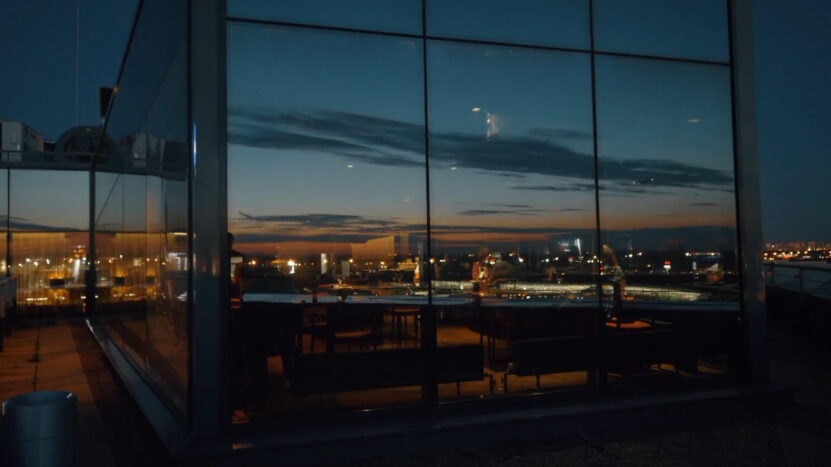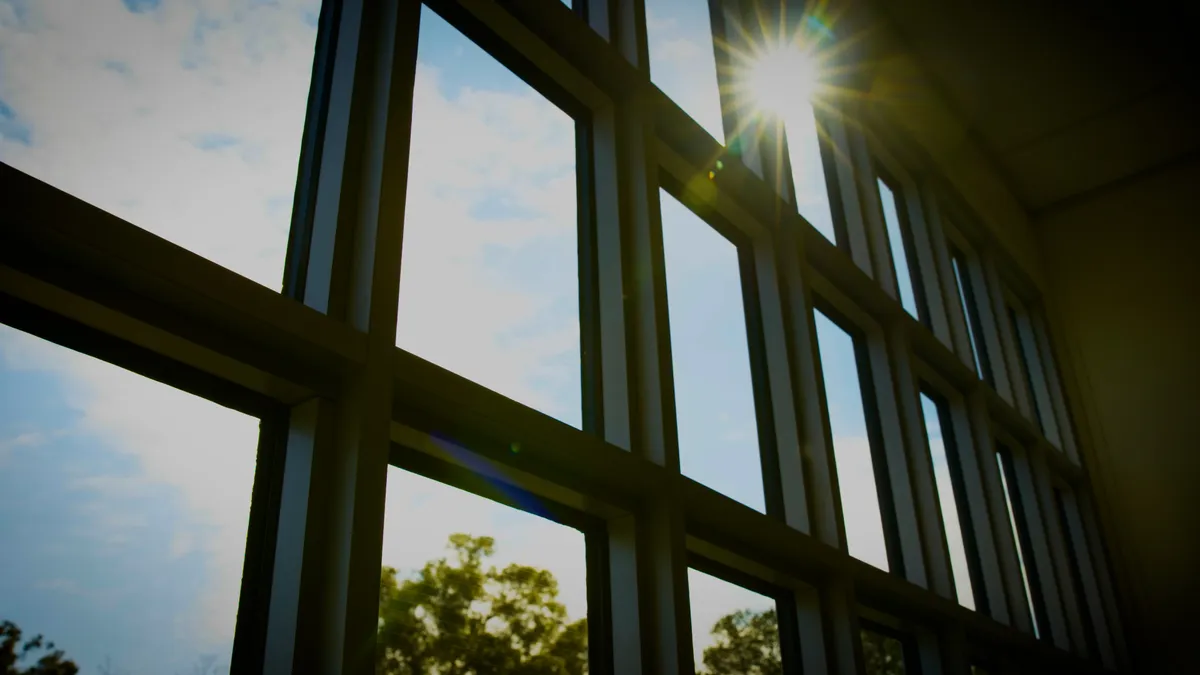In the push toward renewable energy, the focus has often been on maximizing efficiency while minimizing disruption. Solar panels, traditionally confined to rooftops, are now evolving into a new form: transparent solar windows. This technology holds the potential to transform urban landscapes into renewable energy hubs without altering the building design.
The idea of solar windows isn’t new, but early prototypes struggled with low efficiency and high costs. However, recent advancements, particularly in organic semiconductors, have reignited interest. The key difference now lies in how these windows can function almost invisibly while still generating power.
Key Takeaways
- Solar windows are currently capable of achieving up to 10% efficiency.
- A 3×5-foot solar window can generate up to 200 Wh per day.
- Buildings account for 30% of global energy consumption and 28% of CO2 emissions.
- NEXT Energy Technologies and Ubiquitous Energy are leading companies in the development of transparent solar windows.
How Solar Windows Work?

The breakthrough comes from organic semiconductors, which allow light to pass through while still capturing the sun’s energy. This is a huge leap from traditional silicon-based solar panels, which are opaque and bulky.
Organic semiconductors are carbon- and hydrogen-based materials, making them more sustainable compared to materials like silicon or cadmium. When exposed to sunlight, these organic materials generate electricity without sacrificing transparency.
Companies like NEXT Energy Technologies and Ubiquitous Energy are leading the way in bringing this innovation to market.
These windows aren’t designed to replace conventional solar entirely. Instead, they supplement energy needs, especially in high-rise buildings. For instance, a standard 3×5-foot solar window can generate around 200 watt-hours of electricity per day. It’s not massive, but when multiplied across an entire building, the energy savings add up quickly.
Organic Semiconductors
These materials absorb energy from sunlight while allowing visible light to pass through, creating the transparent effect necessary for windows. Unlike traditional silicon-based panels, organic semiconductors capture light in the infrared spectrum.
Energy Generation Potential
While transparent solar windows aren’t yet as powerful as rooftop panels, their impact becomes evident when scaled across multiple windows. A typical 3×5-foot solar window can generate approximately 200 watt-hours per day, depending on the building’s location and sunlight exposure.
Efficiency Improvements and Lifespan
Organic photovoltaic (OPV) cells used in solar windows are improving rapidly. Researchers have achieved up to 20% efficiency in laboratory settings with newer materials. Real-world applications currently average around 10-12% efficiency, but ongoing advancements could push these numbers higher.
These windows are also expected to last for 20-30 years, with minimal degradation, making them a viable long-term solution for energy generation.
The Benefits
- Minimal Aesthetic Impact: They look and function just like normal windows, but with the added benefit of energy generation.
- Space Efficiency: High-rise buildings with hundreds or even thousands of windows can become power generators.
- Lowering Energy Demand: The localized energy production can be especially beneficial in cities with aging infrastructure.
- Sustainability: Using organic materials instead of silicon-based cells also aligns with the growing push for more sustainable manufacturing processes in the energy industry.
Application
One of the first large-scale demonstrations of solar window technology was installed at Patagonia’s corporate headquarters in Ventura, California. Partnering with NEXT Energy Technologies, Patagonia incorporated solar windows across 22 windows on the building’s south-facing façade.
The energy produced is used to power devices and lights in communal spaces.
In another project, Ubiquitous Energy has installed solar windows at Michigan State University and in a commercial building in Boulder, Colorado. Their product, UE Power, provides a fully transparent, colorless coating that blends seamlessly into the architecture. These installations are small in scale but demonstrate the potential for broader adoption.
View this post on Instagram
Expanding Applications in Universities
At Michigan State University, Ubiquitous Energy installed its solar window technology, known as UE Power, with a fully transparent coating. These windows generate energy for campus buildings without sacrificing aesthetics.
Unlike other solar technologies, UE Power windows are colorless, seamlessly blending into the architecture while capturing solar energy. MSU’s installation serves as a successful academic demonstration, showing how large institutions can leverage this innovation to reduce grid dependency.
The Challenges
Solar windows, while promising, face several challenges. One of the biggest hurdles is efficiency. Organic PV technology is less efficient than traditional silicon cells, which means it produces less power per square foot.
Current estimates suggest that solar windows can reach around 10% efficiency, whereas traditional solar panels can exceed 20%.
Another challenge is the cost. Although manufacturing techniques like the slot-die coating process used by NEXT Energy aim to reduce production costs, it’s still an expensive technology compared to standard glass or even conventional solar panels.
Over time, as more manufacturers adopt the technology, costs are expected to decrease, but this remains a barrier for now.
Comparison With Traditional Panels
| Feature | Traditional Silicon Solar Panels | Solar Windows (Organic PV) |
|---|---|---|
| Efficiency | 15-22% | 5-10% |
| Cost per square meter | $100 – $150 | $500 – $600 |
| Power output per square meter | 150-200 watts | 40-70 watts |
| Material | Crystalline silicon | Organic semiconductors |
| Visibility | Opaque | Transparent or semi-transparent |
| Lifespan | 25-30 years | 20-30 years |
| Application | Rooftops, ground installations | Building windows, facades |
Scaling Up for Commercial Use
NEXT Energy Technologies has already demonstrated its solar window technology in a handful of pilot projects, but full-scale production is still in the works. The company’s business model involves partnering with existing window manufacturers to integrate the solar technology into their current supply chains.
This way, window manufacturers can produce solar windows without overhauling their entire process.
In contrast, Ubiquitous Energy has secured a partnership with Andersen Windows to bring their product to residential markets. The aim is to have large-scale production ready by 2025, with initial costs expected to range from $500 to $600 per square meter.
Despite the optimistic outlook, full-scale commercial use of solar windows faces a few challenges. One of the biggest hurdles is cost. While the technology continues to advance, the higher initial price compared to traditional panels, often 5-10 times more expensive per square meter, can be a deterrent for many building owners.
FAQs
Are solar windows suitable for all climates?
Solar windows can work in various climates, but their efficiency depends on the amount of sunlight available. They perform best in areas with high sunlight exposure, although advancements in technology are improving their performance in less sunny regions as well.
How long does it take to install solar windows?
The installation time for solar windows depends on the size of the project and the type of building. For most installations, it takes about the same time as installing standard windows. However, additional wiring may be required to connect the solar windows to a building’s energy system.
Do solar windows require special maintenance?
Solar windows require minimal maintenance, similar to standard windows. Periodic cleaning to remove dust and debris ensures they maintain optimal performance. Since they are integrated into the building’s structure, there’s no need for additional equipment maintenance like traditional solar panels.
How does the transparency of solar windows affect their performance?
Solar windows achieve transparency by using organic materials that absorb non-visible light, such as ultraviolet and infrared light, while letting visible light pass through. Although this transparency slightly reduces efficiency compared to traditional solar panels, it allows the windows to function as both energy generators and aesthetic elements in a building.
Last Words
Solar windows represent an exciting leap forward in renewable energy technology, especially in urban environments where space is limited. By integrating solar energy generation into existing structures without compromising aesthetics, they offer a unique solution to reducing our reliance on fossil fuels.
While the technology still faces challenges in terms of efficiency and cost, ongoing advancements and partnerships with established manufacturers like Andersen Windows are making solar windows a more viable option for both residential and commercial applications.

